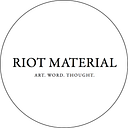A Conflation of Dueling Sentiments In Alexandra Grant’s Born to Love
at Lowell Ryan Projects, Los Angeles (through July 6)
Reviewed by Eve Wood
Artist Alexandra Grant refers to herself as a “radical collaborator,” a dualistic thinker, a synthesizer of textual images into visual form as for many years she has worked closely with both writers and scholars to create luminous paintings that both incorporate and re contextualize the words of others. In the case of her most recent body of work however, Grant has chosen to turn inward, mining a more personal landscape that encompasses the written texts from Sophocles’ Antigone. At the core of Sophocles’ play is the radical iteration, given the year in which it was written and the fact Greece was a patriarchal society, that a woman can have a voice, an identity, a deeply personal conviction, insisting, as Antigone does, on divine altruism and the healing power of love. Love is the driving force that fuels Grant’s work, so it only seems natural that she would gravitate to the prescient words spoken by Sophocles heroine — “I was born to love, not to hate.”
On the surface, this statement seems simple and direct, yet the fact each sentiment can only exist in opposition to the other means that they can never be separated or fully experienced, the one without the other. Grant’s large-scale paintings on paper embody this duality within the process by which they were made. Grant repeats the words “I was born to love, not to hate” in each of the paintings, yet their visual complexity attests to a rich and deeply philosophical understanding of the meaning of this phrase. These works simultaneously contrast and incorporate various forms of abstraction including implementing geometric forms and gestural movements harmonized within a foreground of color field painting and “sepulchral rubbings of text.” The materials used are varied, but it is the fluidity of Grant’s process that truly connects Antigone’s sentiment to a much larger conversation. Alternating between verticality and horizontality as she builds up each image individually, the works simultaneously express a delicacy of gesture grounded within the depths of the surrounding colors and forms.
The paintings begin horizontally as Grant pours and layers the paint onto each surface, creating the suggestion of a more forceful relationship between the shapes formed there and the colors that punctuate the space. The colors that comprise the background in each work are suggestive of early Frankenthaler where the marks appear at once loose yet controlled, primitive yet sophisticated. The text, which is then overlaid onto the painterly surfaces is incorporated during the horizontal phase of each painting, further aligning the feminine voice of Antigone with the larger more pervasive concept of the universal feminine principal, where all life is determined to have derived from the earth with the elements of sea and sky, also experienced on a horizontal plane. Grant works through several iterations or phases within each work, moving them from the floor to the wall where the paint becomes even more gestural, the verticality of the drips and stains, pulling the imagery down to the floor with a kind of predetermined downward velocity. The result is, like Sophocles’ phrase, “I was born to love, not to hate,” a conflation of sentiments, each unreliable, yet each being necessary to understand our human connection to the living world.
Grant definitely privileges love over hate, yet she allows that love necessitates its opposite, i.e. you cannot have one without the other, and this impulse is reflected in the dual nature of the painting’s materiality. In some of the works, Grant sets the text apart from the surrounding space be using markers like organic forms, amoebas perhaps or cellular structures that float above the surface of the paint. The text here is often difficult to read, the letters sometimes written backwards, faded in places and sometimes truncated or wiped away completely. These breaks in the narrative structure, deliberate discordances, disruptions in the visual landscape, create further tension, adding yet another layer of perception and instability to the work. The texts, isolated as they are, exist almost as epithets of hope, conscriptions of longing for a better tomorrow, and yet they could also be said to resemble strange headstones. Subtle as this gesture appears to be, perhaps Grant is suggesting that the choice between love and hate is no longer a personal preference, but now necessitates an intervention, a radical fracturing of this all-too-predictable human condition we find ourselves in. The climate is drastically shifting. Politics in this country have devolved into a carnival show and some would argue that we are in the death throes of a rapidly expiring planet. So, perhaps this is Grant’s wake-up call to all those who are aware enough to see that we must choose love now before love ceases to exist in our modern world.
@riotmaterial
riotmaterial.com
